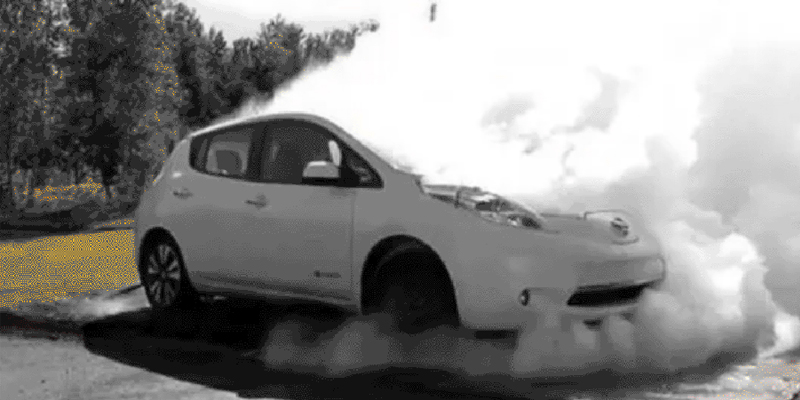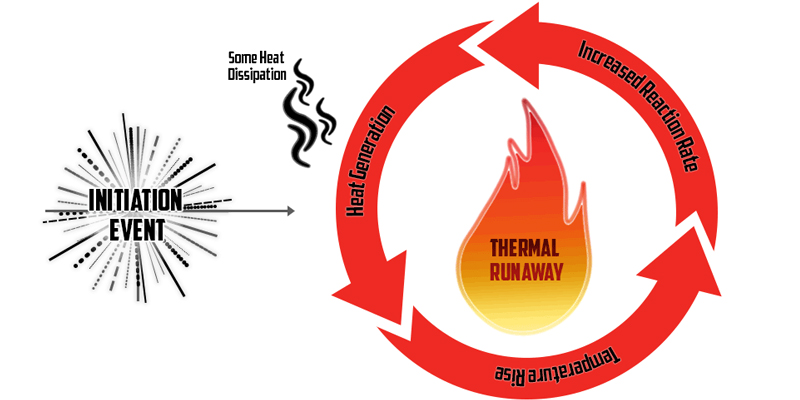This article gives relevant suggestions on the generation mechanism of battery thermal runaway. And how to effectively prevent battery thermal runaway. I hope it will be helpful.
From consumer electronics to automobiles. Now lithium batteries can be seen everywhere in life and production. Based on current popularity, the market will reach $25 billion by 2025.
On the one hand, lithium-ion batteries have high energy density and ultra-long cycle life. Their self-discharge rate is less than 3% per month. Which is less than half that of lead-acid batteries. Also, lithium-ion batteries require little maintenance and do not require regular discharge. Therefore, lithium batteries are greatly sought after by the market.
At the same time, despite the many advantages of lithium batteries, fires have occurred from time to time due to improper use. Therefore, battery thermal runaway is also one of the many hot topics encountered at present.
What Is Battery Thermal Runaway?
Battery thermal runaway refers to the rapid and uncontrollable behavior of the battery’s temperature rising rapidly. Due to the internal overheating of the battery not in accordance with the expected conditions.
It’s a chain reaction, and once it happens, it’s hard to stop. The energy stored in the battery is released very suddenly. This chain reaction produces extremely high temperatures (about 752°F/400°C).
Thermal runaway can cause:
- Ejection of gases, shrapnel and/or particles (violent battery venting)
- Extremely high temperature
- Thick smoke
- Catch fire

What Cause Battery Thermal Runaway?
There are several factors that can cause the thermal runaway:
- Internal Short Circuit. Due to an accident or similar mechanical shock. For example, if the tool is dropped from a height, the battery can deform, the material can penetrate the battery cells and trigger an internal short circuit.
- External short circuit. The deformation of the cell leads to an external short circuit.
- Overcharge the battery beyond the maximum voltage specified in the datasheet.
- Excessive current flow when charging or discharging the battery. Such as during super fast charging.
The Dangers Of The Battery Thermal Runaway?
Thermal runaway can occur if the batteries is misused. Battery thermal runaway can further lead to the release of toxic and flammable gases. Battery thermal runaway that occurs in a single cell can spread rapidly, resulting in thermal runaway of adjacent cells. Once it happens, it will be an uncontrollable chain reaction. Thermal runaway can lead to catastrophic high heat release fire events.
As we all know, lithium-ion battery fires are different from ordinary fires. Gas suppression and water systems are simply ineffective. While fire suppression systems can slow fire spread and heat release, they are not sufficient to provide complete fire suppression once thermal runaway begins. The most effective way to put out these types of fires requires heavy watering for hours or even days.

How To Prevent The Battery Thermal Runaway?
In order to avoid the occurrence of thermal runaway, we need to use the batteries correctly. Following below points can effectively avoid the thermal runaway of the batteries.
Proper Storage Temperature
Storing the battery at the proper temperature can effectively prevent the battery from overheating and causing thermal runaway. The ideal storage temperature for most lithium-ion batteries is between -20-60 °C. However, this may vary by battery material and product, so consult your specific battery’s instruction manual.
At ELB Energy Group, our batteries operate from -20-60 °C.
Do Not Overcharge
Overcharging the batteries can cause additional surprises that can lead to thermal runaway. Therefore, monitoring the state of charge of the battery is critical.
Keep Ventilated
Proper ventilation can increase heat evaporation. All the electronics needed to manage the battery system, as well as the battery itself, generate heat. If ventilation is poor, heat sniping can cause the battery to overheat.
Replace The Old Battery
When the battery is damaged or bulged, please do not try to repair it yourself, let alone try to charge it. The probability of thermal runaway of a damaged batteries greatly increased compared to a new batteries. So please replace the old battery with a new one.
Can The BMS Prevent Thermal Runaway?
Most Lithium battery packs contain a built-in Battery Management System (BMS). This BMS serves as the control center for the battery pack. It ensures that the battery operates under safe conditions.
All ELB lithium batteries have a built-in battery management system. Once the battery is overcharged and the battery is overheated, the battery will automatically power off. At the same time, each battery is inspected by a strict quality department to ensure that all batteries are of good quality.





